Structural problems in a home not only affect safety, but also the comfort and value of the property. Detecting and resolving them early is essential to avoid costly repairs in the future and to preserve the good condition of the home. This guide explores the most common structural problems and provides some strategies for identifying and mitigating them. From moisture damage to deterioration of specific materials, you’ll find valuable information here to keep your home in the best possible condition.
Moisture and Leakage
One of the most one of the most common structural problems in dwellings is dampness.It can enter the structure in various ways: rising from the ground, through leaks in ceilings and walls, or even through poorly insulated pipes. The presence of moisture can not only cause visible damage, such as stains and mold, but can also weaken structural materials, affecting the strength of walls and foundations. To avoid this, it is important to have a good waterproofing system, especially in areas prone to rain, and to make sure that all pipes and drains are in good condition. If you already see signs of moisture in your home, a quick inspection can help you avoid further damage.
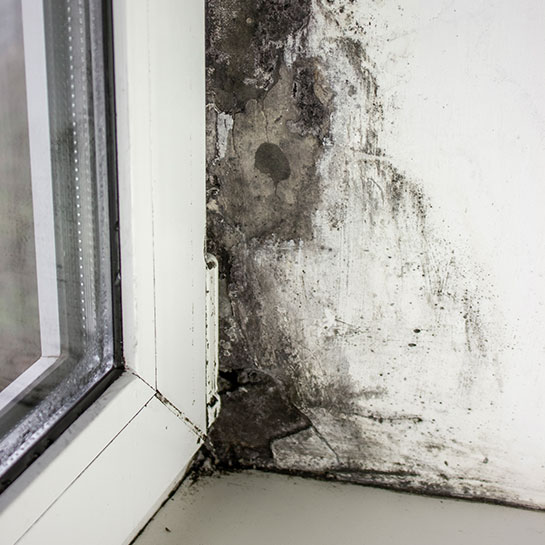
2. Cracks in Walls and Load-bearing Walls
Cracks are another warning sign that may indicate structural problems, especially if they appear in load-bearing walls. These cracks can develop due to settlement of the home, ground movement or construction errors. While not all cracks are dangerous, those that have a zigzag pattern or increase in size could signal foundation problems. Preventive structural maintenance, including periodic inspections, can help detect these signs of wear and tear early and prevent them from becoming major problems that compromise the stability of the home.
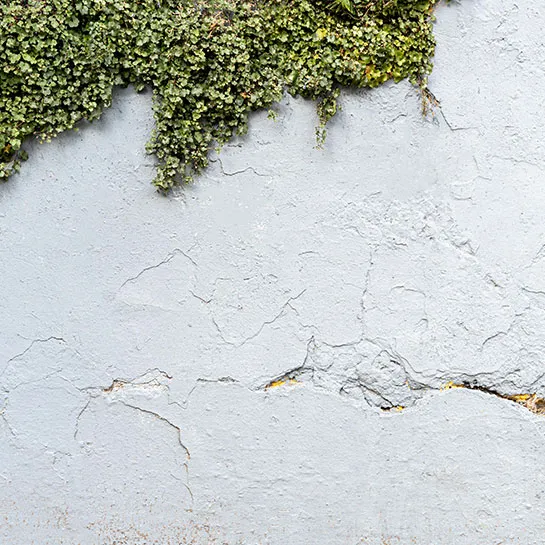
3. Floor Sinking
Sinking floors are usually a clear sign that there is a problem with the foundation or the soil under the house. This can occur when the soil loses its stability due to changes in humidity, or because the foundation was not well calculated at the time of construction. The subsidence can affect the balance of the house, generating misalignments in doors and windows and causing cracks. Before building, a study of the terrain helps to avoid these problems, since it allows adapting the foundation to the specific characteristics of the soil. If subsidence already exists, a professional can recommend appropriate reinforcements or stabilization of the foundation.
4. Cracks and Cracking in Roofs
Ceilings are also exposed to cracks and crevices, which can sometimes be caused by the excessive weight of the upper elements or by movements of the structure. These types of cracks not only affect the aesthetics of the house, but also allow the entry of moisture, which over time can weaken the roof. Adequate structural design, taking into account the loads that the roof must support, is key to prevent these problems. In addition, regular inspections can help identify early signs of cracking and address them before they become more serious.
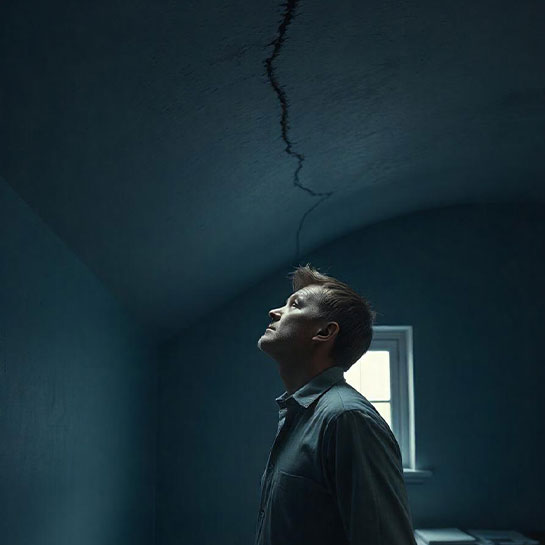
5. Façade Damage
Home facades suffer constant wear and tear due to exposure to the weather, such as rain, wind and sun. This can cause them to deteriorate over time, generating spalling, cracks and other signs of wear. In addition, in coastal areas, salty air can further affect the materials, accelerating their deterioration. To keep the facade in good condition, the use of weather-resistant materials and frequent maintenance are recommended. A waterproof coating can also protect the structure from inclement weather, prolonging its useful life.
6. Tiling and Tiling Problems
Tile often peels or loses adhesion over time, which can occur due to changes in temperature, humidity or improper installation. This problem is common in humid areas, where tiles can buckle or peel if they have not been installed properly. To avoid this, it is important that the adhesive used is of good quality and formulated to resist temperature and humidity changes. In addition, in areas prone to moisture, it is recommended that a waterproofing layer be applied under the tiles.
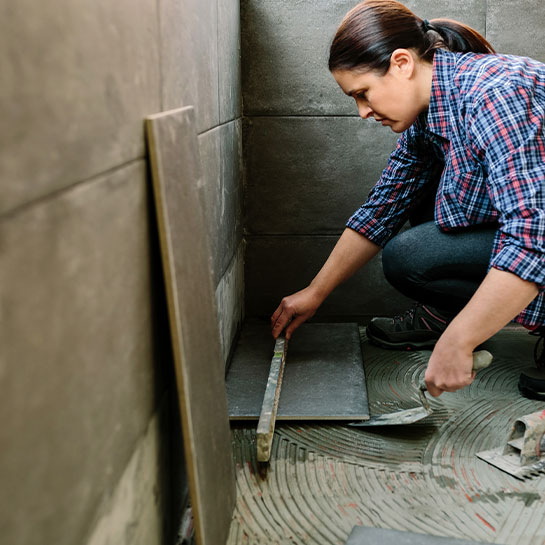
7. Detachments in Paint and Finishes
Interior and exterior finishes, especially paint, can suffer from peeling and wear over time, especially in damp areas. This not only affects the appearance of the home, but can also reveal underlying moisture problems that could damage the structure. To minimize the risk of peeling, it is essential to choose high-quality paints that are suitable for the conditions of the home. On exteriors, waterproof paints provide an additional layer of protection against inclement weather, and on interiors, the use of damp-proof paint helps to avoid this problem.
8. Deterioration in Wood Structures
Wood is a natural material and, as such, is susceptible to damage from moisture, pests and fungi. In structures such as beams and ceilings, these factors can reduce its resistance and jeopardize the stability of the house. To prevent wood from deteriorating, it is advisable to apply varnishes and treatments that protect against moisture and pests, and to carry out periodic inspections to identify signs of infestation or rot. Constant maintenance of wood is key to preserving its integrity and durability over time.
9. Aluminosis and Problems in Reinforced Concrete
Reinforced concrete is one of the foundations of modern construction, but it can suffer from problems such as aluminosis, which affects its durability and strength. This problem, more common in older structures, is aggravated by exposure to moisture, which can corrode internal steel bars. In older homes, it is important to inspect for signs of aluminosis or corrosion. Using quality materials and ensuring adequate moisture protection is essential to prevent serious damage to reinforced concrete.
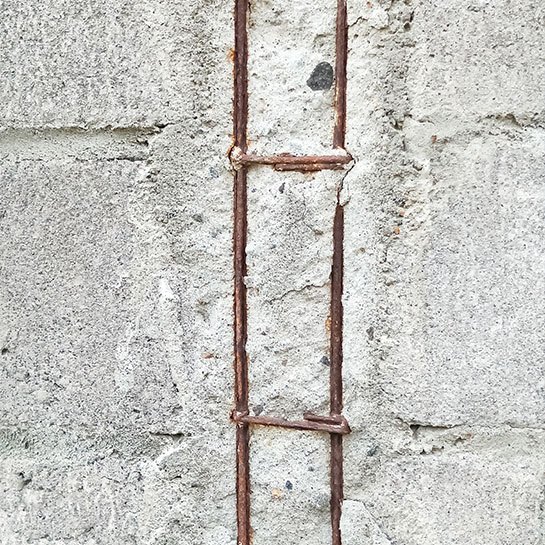
10. Deformation in Load-bearing Elements (Walls, Beams)
Load-bearing walls and beams are designed to support the weight of the structure, but over time or due to design errors, they can suffer deformations. When these elements begin to sag, the stability of the home is compromised, which can lead to cracking and buckling. To prevent these problems, it is essential that the construction of the home provide for proper materials and design to support the weight of the structure. Periodic inspections can help identify any initial deformation and apply reinforcements if necessary.
Detecting and fixing structural problems early is crucial to ensure the safety and prolong the life of a house. With a preventive approach that includes regular inspections and the use of quality materials, it is possible to minimize the occurrence of these problems. If you notice any signs of structural deterioration in your home, consulting a qualified professional will help you make the right decisions and prevent the problem from growing.
How often should I inspect my home for structural problems?
It is advisable to perform a complete structural inspection every one to two years, especially in areas of the house such as roofs, foundations, and facades that are exposed to changing weather conditions. If your home is older or in an area with extreme weather conditions, consider more frequent inspections.
How serious can cracks in load-bearing walls become?
Cracks in load-bearing walls can be an indication of serious structural problems, especially if they are deep, increase in size or have an irregular zigzag pattern. These types of cracks could affect the stability of the home, so it is important to contact a professional to evaluate them and take the necessary steps to repair them.
Can I solve the moisture problems myself or is it better to hire a professional?
For minor moisture problems, such as stains or small paint chips, you may be able to apply temporary solutions. However, if you notice that the dampness persists or affects important areas such as foundations or walls, it is preferable to consult a professional. An expert will be able to identify the root cause of the problem and suggest lasting solutions, such as waterproofing systems.


